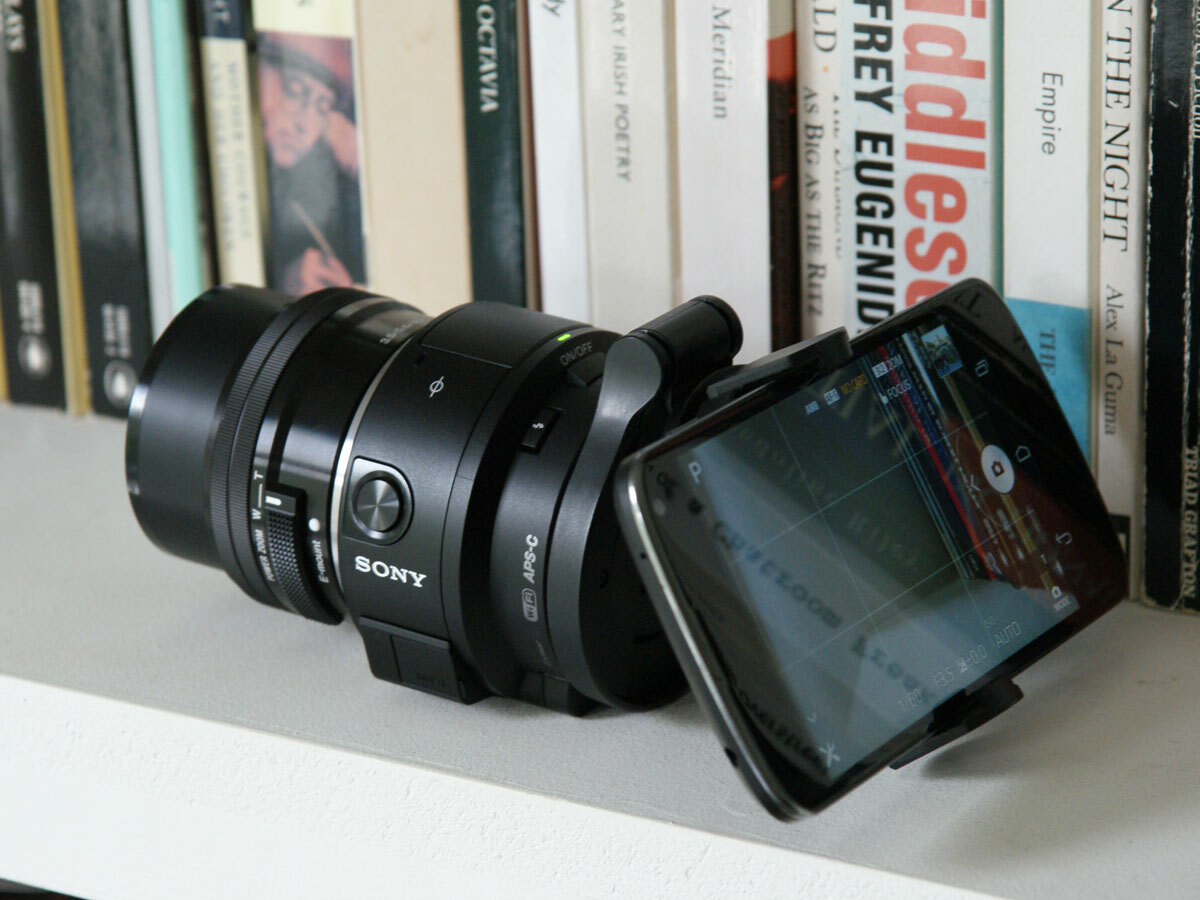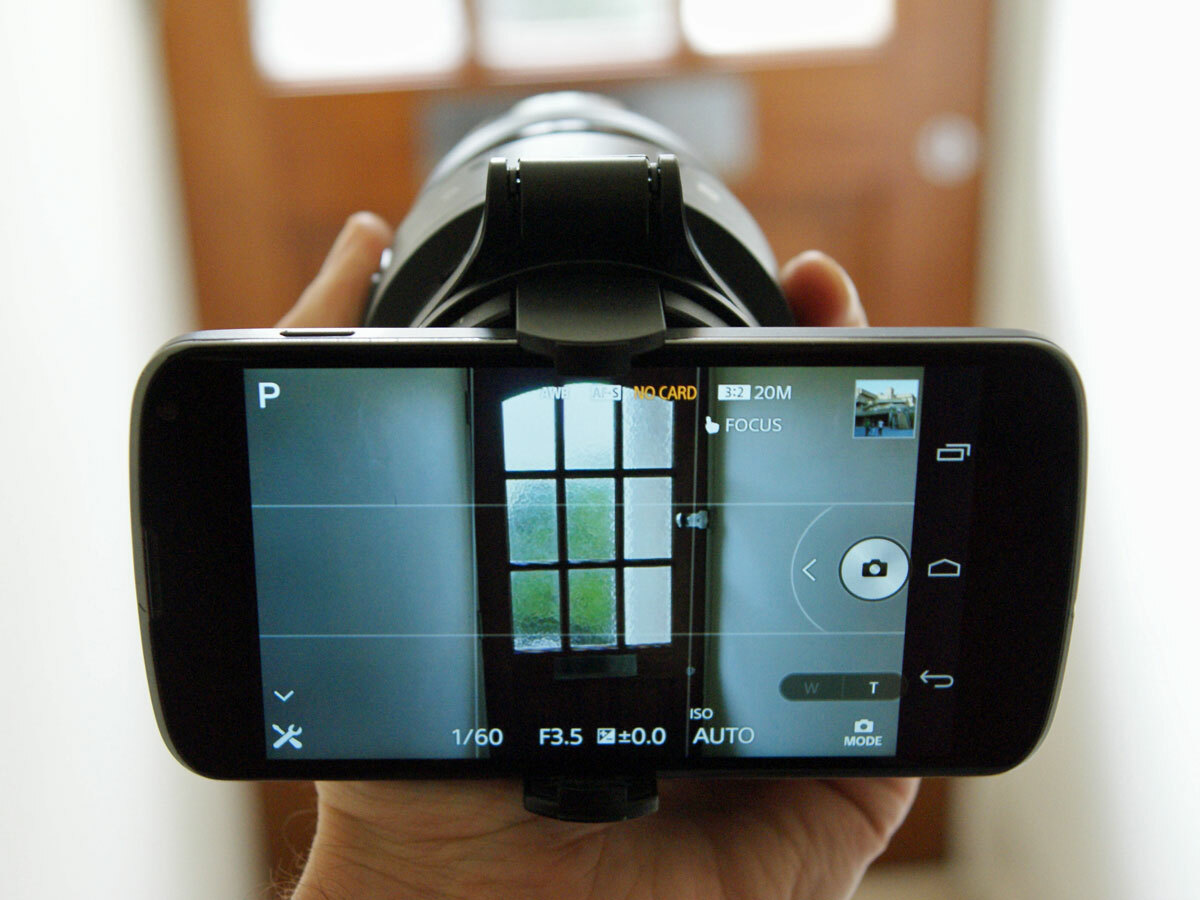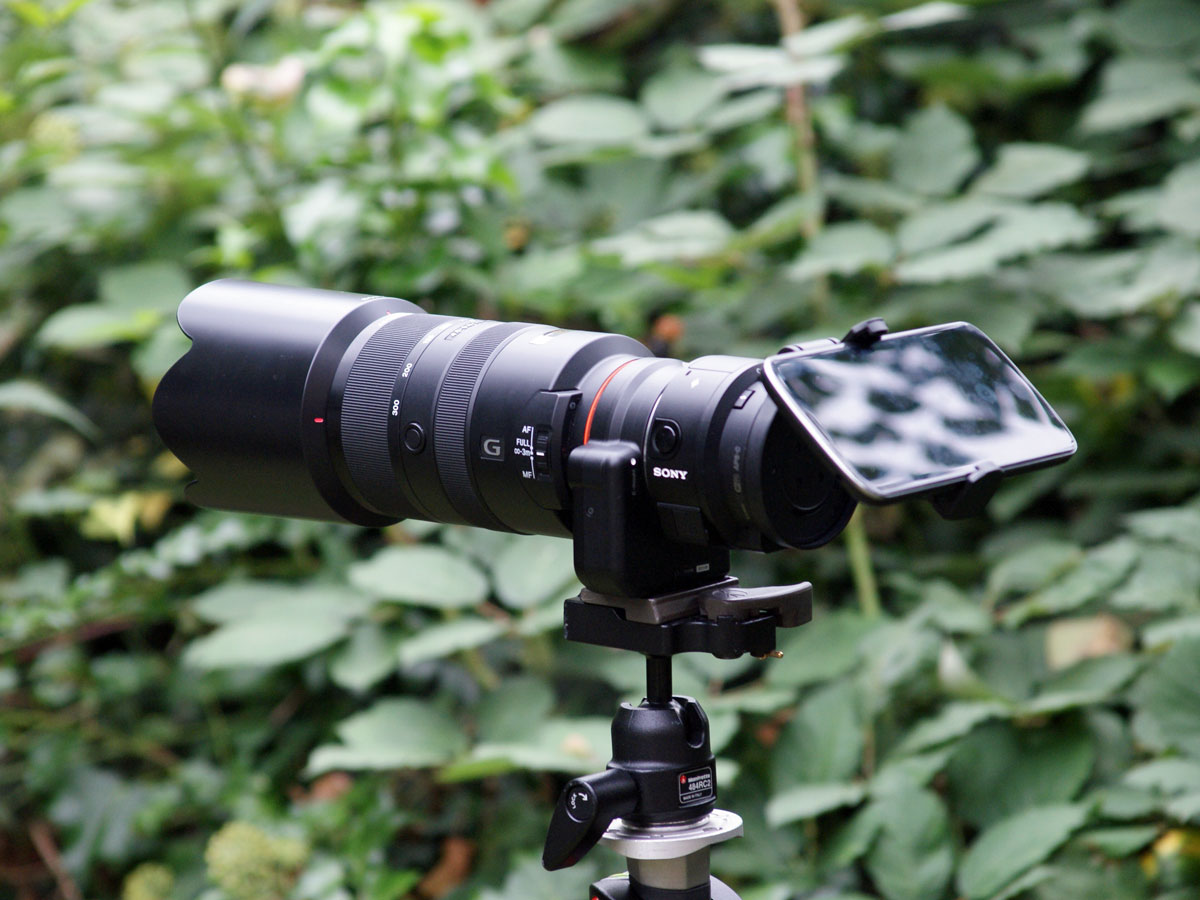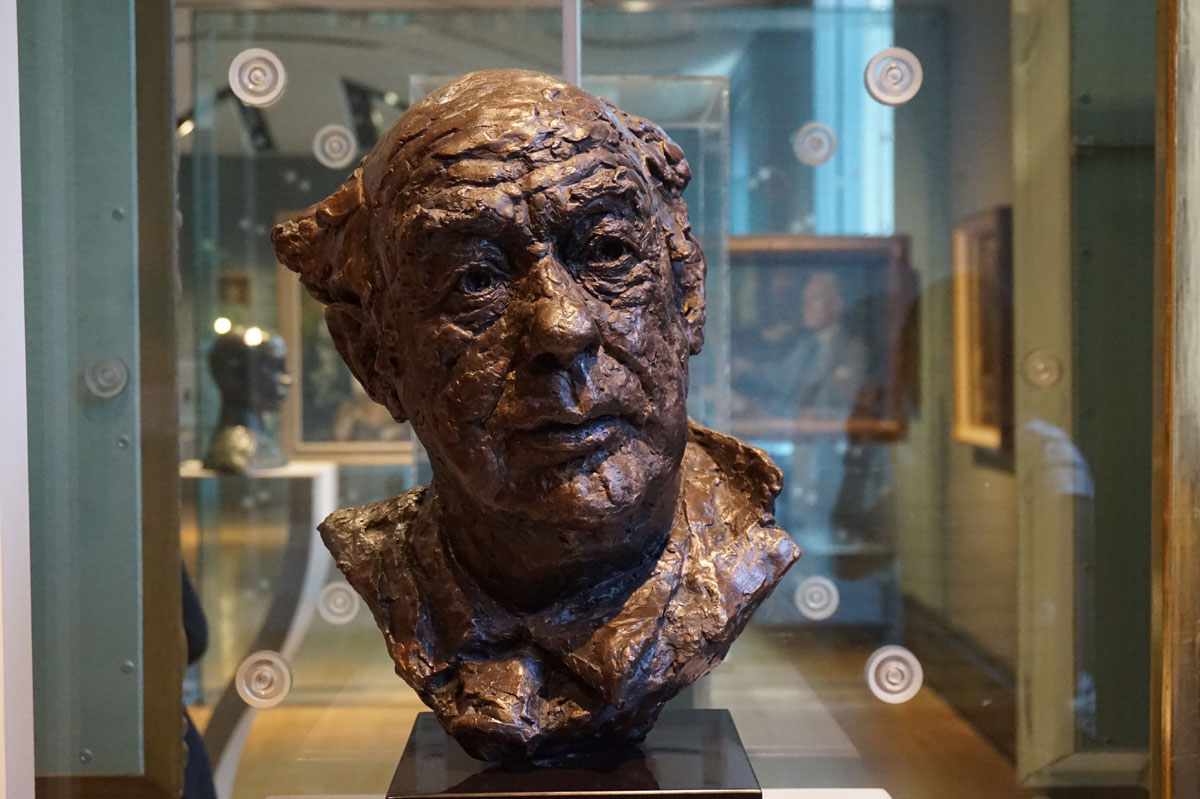Sony QX1 review
An add-on that makes your smartphone shoot like a DSLR? Snap it up! If you have the lenses to get going, that is..

Sony is still willing to innovate – sometimes in quite bizarre fashion – and few devices encapsulate that vision better than the QX1.
Like last year’s QX10 and QX100 “smart lenses”, the QX1 is a camera add-on for a phone – but unlike its predecessors, it supports interchangeable lenses and sports a DSLR-sized APS-C sensor. So it’s a module that turns your phone into a system camera. Smarter than the average smart lens, you could say.
Our first thought upon seeing it was: “That’s ridiculous!” Our second? “We want one.” Having spent the past week taking photos and video with it, here’s our opinion on a strange – but strangely tempting – device.
Sturdy and small

The QX1 is a fairly pricy product aimed at people who are serious about improving the quality of their photos, and Sony has clearly made an effort to make the product feel worthy of its status and price tag. Even without a lens attached, it’s a weighty thing (for its size) with lots of metal in the body. A wrist strap comes in the box, and we suggest you use it – because if you drop the QX1, it’ll hit the ground hard. The exterior is made from thick matte-finished plastic and feels tough enough to withstand everyday use.
A door at the back pops open to reveal a lithium-ion battery, chargeable via USB, plus a microSD slot. You don’t need a microSD card inside to shoot stills with the QX1 (smaller preview images will be stored into your phone’s memory) but you will need one if you want to shoot at the highest quality or if you want to capture video.
There’s a tripod mount at the bottom of the QX1 and – a first on the QX range – a pop-up flash on top. There’s also a shutter release button on the left side (half-pressing this will trigger the autofocus), while on the right a display gives you three pieces of info at a glance: remaining battery power; the presence (or not) of a microSD card; and whether or not Wi-Fi is switched on.
Supplied in the box is a phone mount that clips your smartphone (tablets will be too large) to the back of the QX1. This can be replaced by a hand grip and/or a tilt mount which are sold separately as a package.
Then there’s the lens mount. The QX1 supports lenses made for Sony’s E-mount system (of which there are plenty), and by attaching an official Sony adapter you can also use A-mount lenses (of which there are a whole lot more) with autofocus. Third-party adapters will allow lenses from Leica, Nikon, Canon and more to be attached, at the cost of autofocus.
It’s worth noting here that £250 gets you the QX1 with lens mount but when adding a lens, you’re looking at more like £400 to get started. Unless you already have a stock of Sony glass at home.
Awkward to hold, easy to set up
To use the QX1, you’ll need to install Sony’s PlayMemories Mobile app on your smartphone – and at present that’s available on Android and iOS. You then connect the QX1 and phone via Wi-Fi Direct (incredibly easy if you’ve got an NFC-equipped phone and a bit of a faff if you haven’t), open up the app and you’re ready to shoot.
Photos and videos can be taken either by tapping the on-screen button (you can also set your focus point by tapping a section of the screen) or pushing the physical shutter release button. Half-pressing the latter will engage autofocus.
If there’s an immediately evident problem with the QX1, it’s that it’s quite awkward to take photos with it. We often found that we were neither comfortable using the physical button nor the screen to take a shot, and that a lot of our photos came out slightly wonky even though we’d felt like we were framing them dead-on. Perhaps that’s just a consequence of using a new type of camera that’s held in a different way to existing DSLRs and compacts, and perhaps it’s something we’ll get used to – but we can’t deny that there’s an issue there, minor as it may sound.
The PlayMemories Mobile app allows a large degree of control when taking photos. You can shoot in Aperture, Shutter or Program priority modes if you want to change settings significantly, or switch to one of the two automatic modes: Intelligent Auto for everyday shots; and Superior Auto for more dimly lit scenes.
Photo quality
Here’s where the QX1 really excels: it’s essentially a 20.1MP DSLR that’s the size of a DSLR lens. With a large APS-C Exmor sensor and the ability to use high quality lenses, it happily takes photographs that no smartphone camera could dream of capturing.
We mostly used it with Sony’s 16-50mm E-mount power zoom, a compact lens which comes with optical image stabilisation. It’s a good all-rounder and the photos above were all taken using it – but we were far more excited once we’d bolted on Sony’s LA-EA4 adapter, which allowed us to use our larger A-mount lenses.
This meant we could take extremely detailed close-ups of spiders using a 90mm macro lens or snap far-off birds using a 70-300mm zoom. You lose optical image stabilisation here, which means you either need to shoot in good light or possess a very steady hand (or tripod), but the results we got were DSLR-quality and on our phone in moments – ready to share straight away to Instagram or Facebook, or send to a friend via MMS.
If you’ve slotted a microSD card into the QX1, a full-resolution 20.1MP image will be stored on there – handy if you want to print or blow up shots or shoot in RAW mode for maximum post-processing potential – but the smaller (5MP and around 500k in size) photos that are stored straight away on your phone are of more than sufficient quality for most purposes.
Sony QX1 tech specs
Sensor: 20.1MP Exmor APS-C CMOS
ISO range: 100-16000
Video: MP4 1920 x 1080 at 30fps
Wi-Fi and NFC: Yes
Weight: 216g
Dimensions: 74 x 69.5 x 52.5mm
Video quality
You’ll also need a microSD card in the camera if you want to record HD video. It’s recorded in 1920 x 1080p in MP4 AVCHD format, and looks very nice indeed – but aficionados may be a little disappointed with the lack of tweakability on offer. You can’t manually focus or change settings like ISO or aperture, so there’s little room for outside-the-box creativity.
Essentially, it’s a bit like capturing video on a smartphone, albeit with far, far superior image quality (less noise, cleaner colours and better contrast).
Sony QX1 verdict

As we said earlier, we find the Sony QX1 to be a bit of an oddity, and we’re not quite sure who it’s aimed at.
Existing enthusiasts will likely find themselves annoyed at the awkwardness of having to pair it with a phone and hold it in an unusual way (and they probably own a system camera already anyway), while smartphone users looking to boost their handset’s shooting capabilities may find it a little too pricey. After all, you can buy a standalone Sony A5000 E-mount camera, which has the same sensor, 16-50mm lens and NFC/Wi-Fi combination for only a few pounds more.
That said, we’ve had a lot of fun with the QX1 due to its small size and the ease with which it pairs with our NFC Android phone. The fact that you can instantly share photos taken with it using any number of smartphone apps may be a novelty, but it’s not wearing off for us after a couple of weeks.
Stuff Says…
A quirky and high-quality photo add-on for your phone but it’s hard to think of anybody who’d find the QX1 essential
Good Stuff
Small and sturdy
Hassle-free pairing with NFC phones
DSLR photo quality
Bad Stuff
Can be awkward in your hand
Little creative freedom with video
Expensive when starting from scratch









